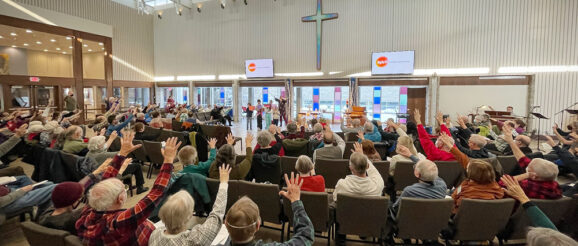Spirit Catholic Community’s roaming has taken it to a place of innovation

She applied, and her undergraduate degree in music and her master’s in pastoral studies apparently was the right fit. She was hired and went to work there in July 1991 as director of liturgy and music. She remained in that position until 2008, when the leadership of the archdiocese and the parish changed.
The retiring archbishop, Harry Flynn, she said, “loved St. Stephen’s. He loved that we had a shelter; he loved that we had a free store for clothing, he loved that we were doing job education and computer skills and all of these pieces.”
Though he received some complaints from time to time, she said, he also apparently ignored those about certain practices, including women reading the Gospel and preaching, that pushed liturgical limits. Especially the liturgies that were held in the school gym, where there was what she called an “open pulpit” and where women preached and where a “strong prayer leader group evolved.”
But a new archbishop was on the way, and a newly assigned pastor presented what some took as a list of ultimatums that included “only the ordained would be permitted to open the word and preach, and all liturgies would occur in the church proper and not in the gym,” Hemlock said.
Flynn called a meeting of parish staff and parish council, including Hemlock. “He gave us four weeks to get our act together,” she said.
While the community often refers to Catholic theologians and major figures in the church such as St. Archbishop Óscar Romero, and has even read from the U.S. bishops’ pastoral on peace, she believes the church’s intransigence over women, treatment of the LGBTQ+ community and exclusion of certain people from the Eucharist will remain barriers to a reunion for the foreseeable future.
